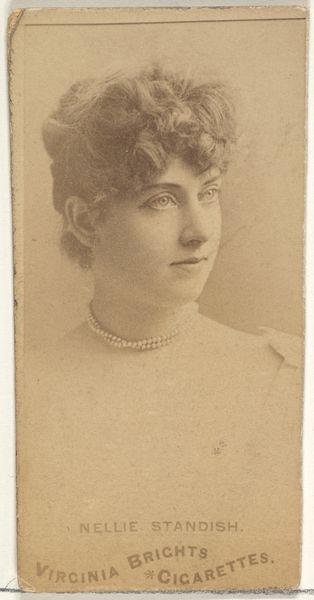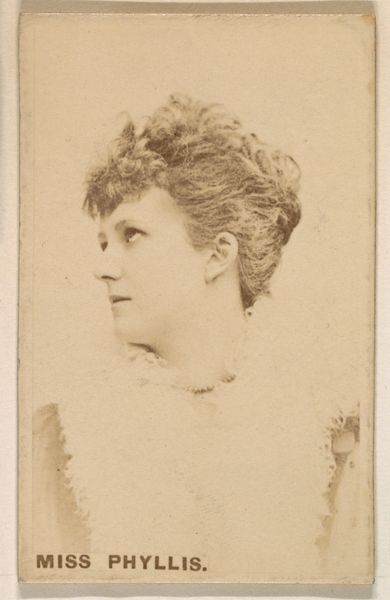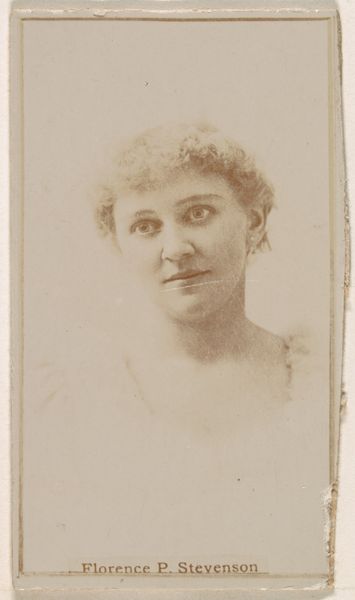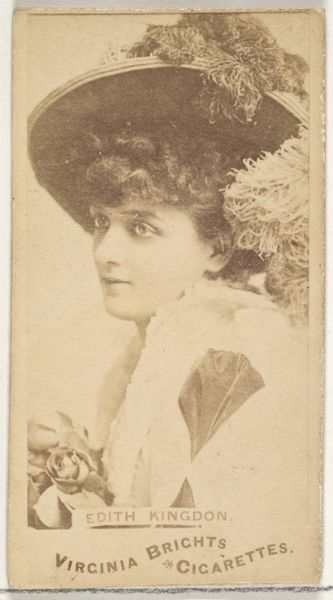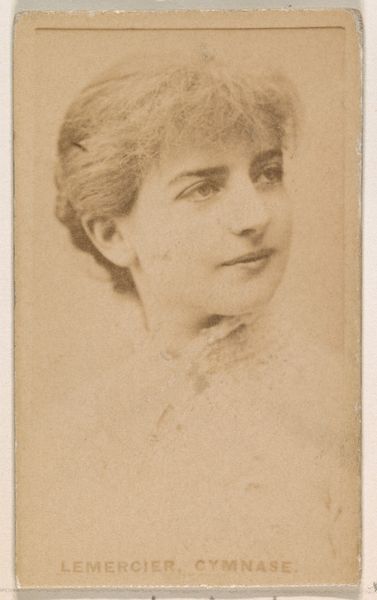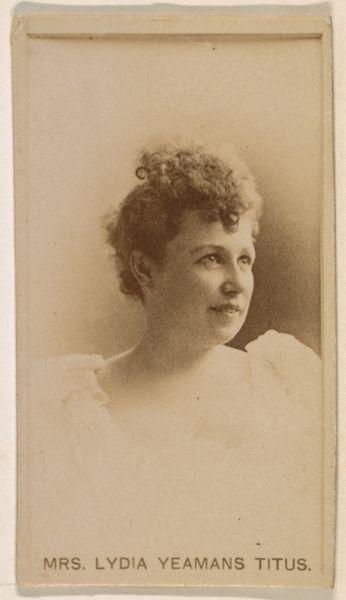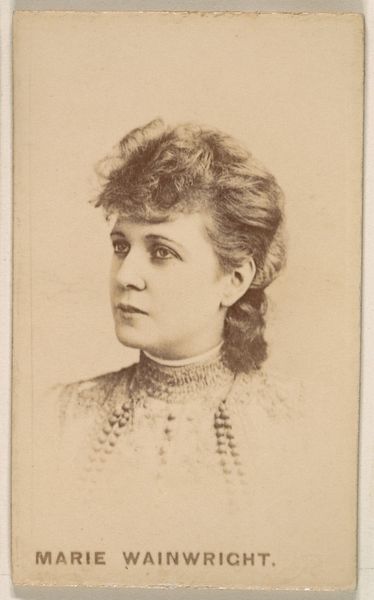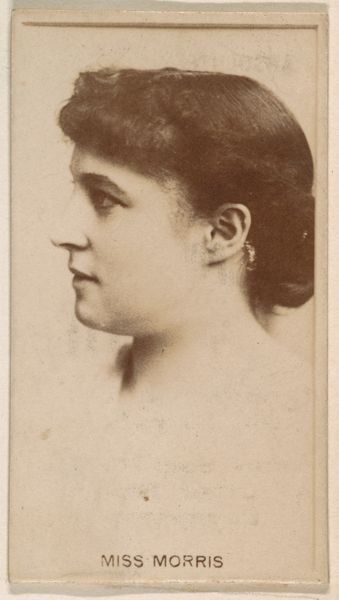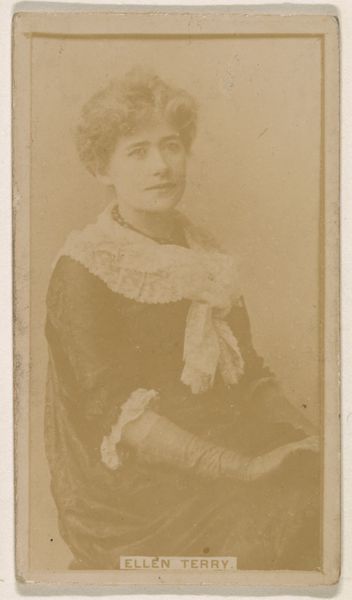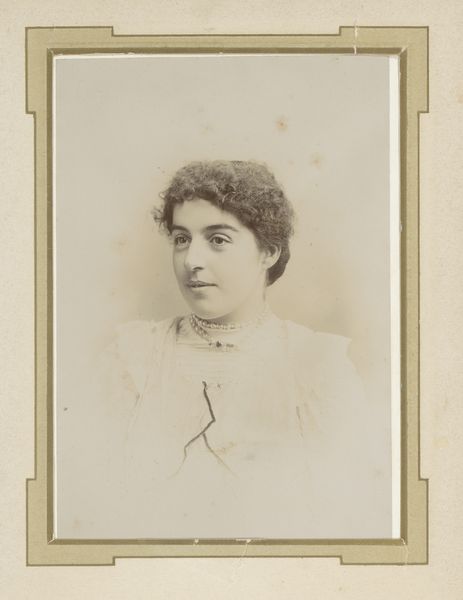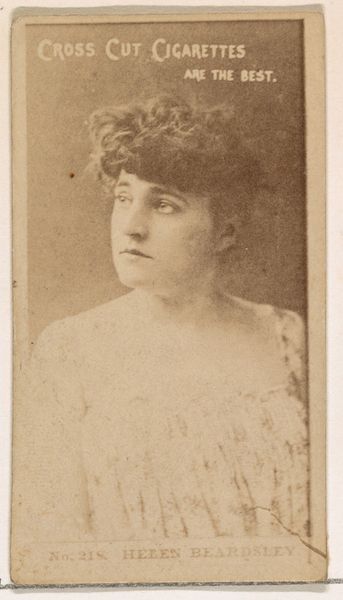
Marguerite Ziemer, from the Actresses series (N245) issued by Kinney Brothers to promote Sweet Caporal Cigarettes 1890
0:00
0:00
drawing, print, photography, gelatin-silver-print, albumen-print
#
portrait
#
drawing
# print
#
photography
#
gelatin-silver-print
#
albumen-print
Dimensions: Sheet: 2 1/2 × 1 7/16 in. (6.4 × 3.7 cm)
Copyright: Public Domain
Curator: Here we have a trade card from 1890, "Marguerite Ziemer, from the Actresses series (N245) issued by Kinney Brothers to promote Sweet Caporal Cigarettes." It’s a lovely albumen print, currently residing here at the Met. Editor: The sepia tone gives it such a nostalgic, almost ethereal feel. Her gaze is soft, engaging. It’s quite intimate, actually. Curator: Consider the historical context. This wasn’t fine art; it was mass-produced, a throwaway piece of promotional material. Kinney Brothers used a photographic process for these cards; the actresses were often photographed in studio settings, and their images printed on albumen paper—a process using egg whites as a binder—to achieve that distinct luminosity. Think of the volume of labor, the access to resources for this level of printing technology. Editor: Exactly, the circulation of these cards reveals a lot about the industrial revolution and commodity culture at the time, and what it meant to represent and commodify the images of these women. This campaign capitalized on the celebrity of stage actresses, but also catered to male consumerism of women in advertising at the turn of the century, a perfect collision of entertainment, advertising and identity. Curator: And while “fine art” portraits of the period often carried strong markers of social class and privilege, these smaller, mass-produced portraits blurred those lines. Someone from almost any socioeconomic background could possess a photo of a prominent actress. But the material and means of producing these images is of note, of course, but is worth analyzing more broadly and deeply through gender, race and class constructs. Editor: Definitely. The access was there, sure. Yet the framing and dissemination reinforce established societal hierarchies. For example, the hyper-femininity and idealised depiction in the photography. These were not objective images, the lens itself being heavily manipulated for a specific consumerist agenda. It's about controlling and marketing the female image. Curator: An interesting tension then: democratizing image ownership while reinforcing established roles. The sheer volume of these cards speaks volumes. Editor: Right, so, in its own way, it's not merely a quaint artifact, but a potent historical document revealing those interwoven threads of commerce, celebrity and gendered visibility. Curator: A simple trade card reveals a surprisingly complex picture of its time. Editor: Precisely, art doesn’t exist in a vacuum; its impact resides within an ongoing social conversation.
Comments
No comments
Be the first to comment and join the conversation on the ultimate creative platform.

